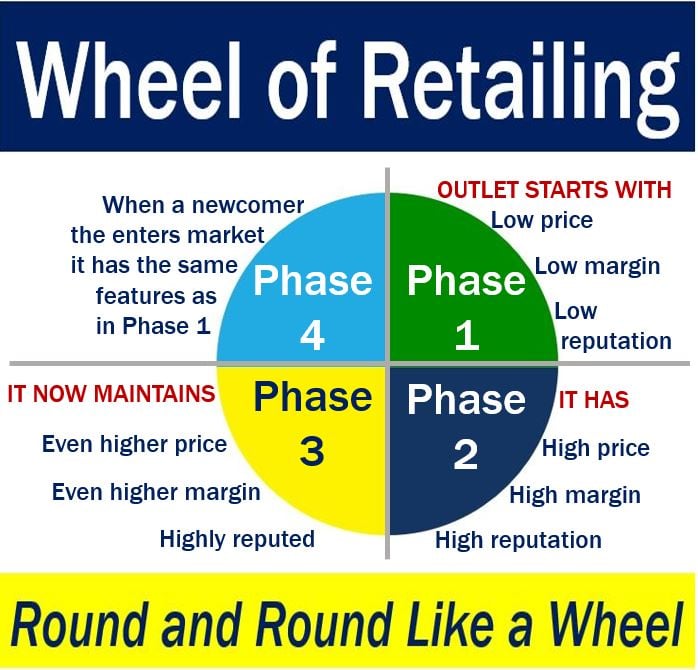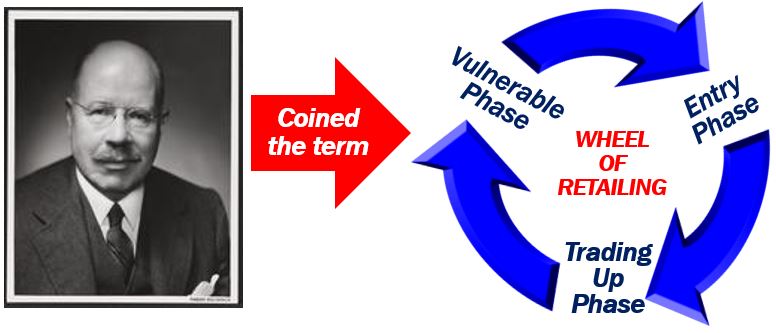Wheel of retailing – definition and meaning
The Wheel of Retailing is a major hypothesis regarding patterns of retail development in which new types of retailers generally enter the market as low-margin, low-status, low-price operators, that gradually acquire more elaborate premises and facilities and move upmarket. In other words, the wheel of retailing, also called the retail wheel, refers to how retailers start off as discount stores, but start boosting their prices as soon as they become established.
Finally, they mature as high-cost, high-price, upmarket merchants who are vulnerable to the market’s newer entrants.
This cyclical process highlights the dynamic nature of retail, where long-term success often requires adaptation and the continuous reevaluation of business strategies.
The Wheel of Retailing theory suggests that as retailers ascend the wheel, their increased operational costs can lead to a reduction in competitive pricing advantages.
Professor Malcom P. McNair
The term ‘wheel of retailing’ was coined by Professor Malcom P. McNair (1894-1985), who taught at Harvard Business School for forty-three years.

According to The Economic Times:
“The Wheel of Retailing is a hypothesis that describes how retailers approach to capture market share and create brand value.”
“It explains how retailers usually begin at the bottom of the wheel with low prices, profits and prestige and then gradually work their way up to increased prices, profits and prestige.”
The wheel of retailing is not an economic or retailing rule – it is a hypothesis. It might not be applicable to every retail situation. However, it does seem to explain a number of retail trends in many nations’ economies.
The majority of retail commercial enterprises start off on low cost, low margins and low price, but as their sales begin to rise they rapidly shift to a high cost, high revenue business model – that is, until a newcomer arrives doing exactly what they did when they first came.

Wheel of retailing – an example
The idea behind the example below comes from an article in MBASkool.com.
Imagine that a fictitious person – Fred Bloggs – opens a new restaurant in a temporary location. He calls it Bloggs Meals and offers a number of limited items at very low prices.
As soon as the construction of the premises is completed, Fred begins introducing greater variety and offers several new services, including free home delivery, as well as bed and breakfast.
As Bloggs Meals builds up a brand image and becomes more established, Fred begins to raise prices on his earlier items. He does this to recover the fixed costs rapidly so that he may have an early break-even.
However, a couple of years later, a new restaurant enters the scene and begins to offer the same items as Bloggs Meals, but at very low prices. In order not to lose customers, Fred will have to reduce his prices back to what they were earlier.
Fred has moved right round the ‘wheel of retailing’.
This exemplifies how consumer loyalty can be challenged by the continuous cycle of retail evolution, necessitating retailers like Fred to innovate constantly to retain their market share.
Video – What is the Wheel of Retailing
This video presentation, from our YouTube partner channel – Marketing Business Network, explains what the ‘Wheel of Retailing’ is using simple and easy-to-understand language and examples.

